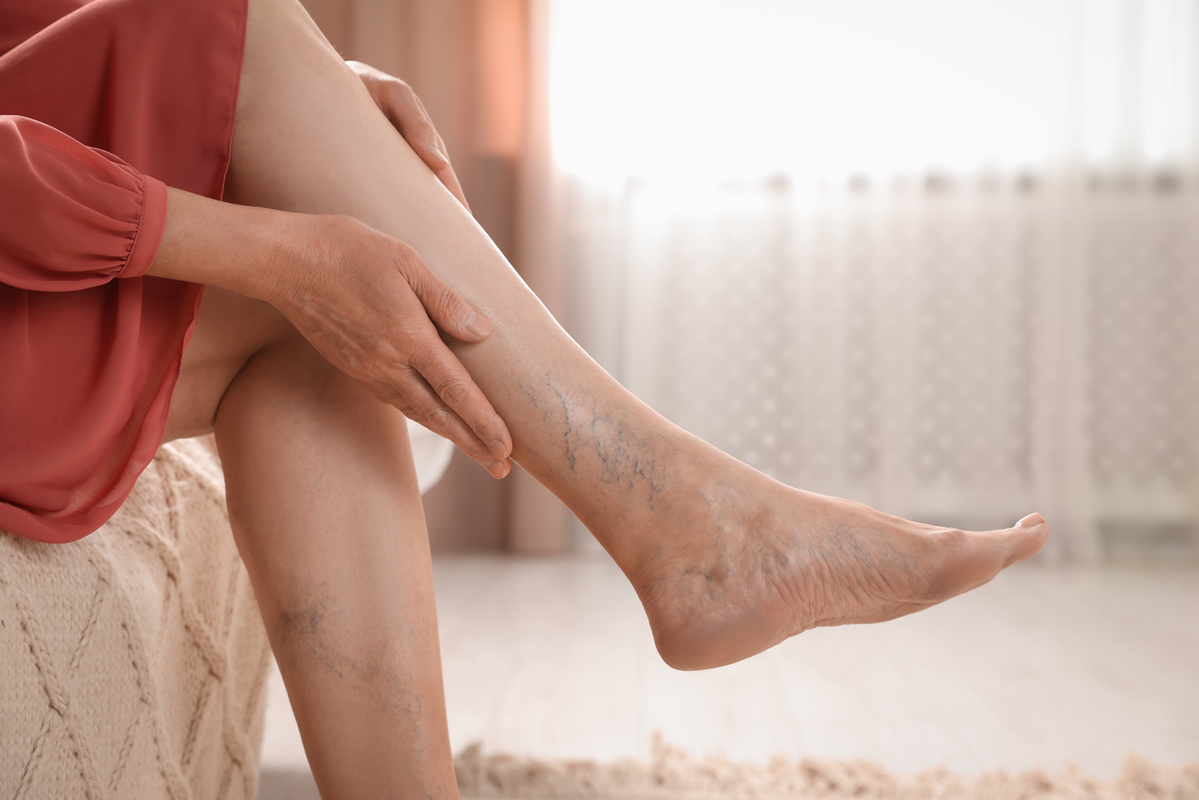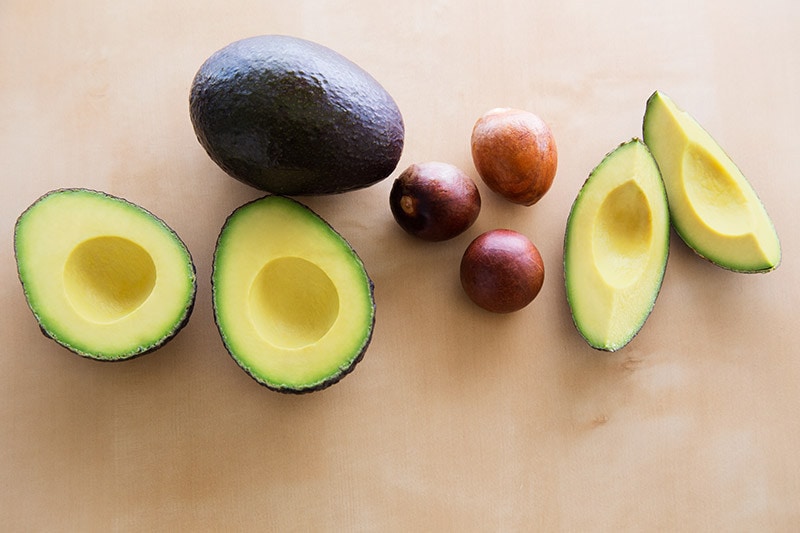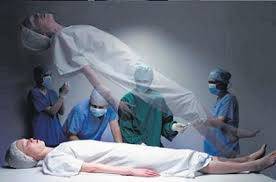
![]()
Do you often feel leg discomfort like aches, cramps, swelling, or chilly feet? These symptoms may be linked to poor circulation in your legs. Today, we’ll explore the symptoms and causes of poor blood circulation in your legs, and how you can alleviate these symptoms caused by inadequate blood flow.
First, what is poor circulation?
When you have poor circulation, it means there is insufficient blood flow to certain parts of your body, like your hands and feet, or a lack of blood flow throughout your body.
It’s not a standalone disease, but rather a root cause or symptom of health conditions like high blood pressure, abnormal cholesterol, and diabetes, plus other factors we will discuss later in the video.
Over time, poor circulation can lead to disease, and this can make your circulation worse. Conversely, when your blood circulation is healthy, your overall health improves.
Next, what are the symptoms of poor circulation?
The symptoms of poor leg circulation are varied and also affect other parts of your body. They include:
Cold feet and hands all the time, while the rest of your body is warm.
Numbness, and a tingling sensation in the hands and feet.
Sores, and ulcers on the legs that are hard to heal.
Dry, itchy skin, or discolored skin on the nose, lips, ears, hands, and feet that appears pale, blue, or purple.
Shiny legs, and loss of hair on the legs and feet.
Muscle cramps and joint pain in the legs and arms.
Pain in the calf muscles when walking.
Varicose veins on legs that ache and feel heavy.
Swollen legs, from fluid pooling in your legs, feet, and ankles.
Dizziness, loss of balance, and forgetfulness.
Reduced muscle strength, low energy levels, and quick onset of fatigue.
Digestive problems, such as cramping, abdominal pain, diarrhea, and bloody stools.
Next, why is it important to improve poor blood circulation?
When your circulatory system works well, your blood can deliver oxygen and vital nutrients to every living cell in your body through the arteries, and carry away waste products and carbon dioxide through your veins.
If your blood flow is disrupted, certain parts of your body will not receive enough oxygen and nutrients.
This results in poor circulation, which tends to affect your legs first, since they are furthest away from your heart.
However, if you notice symptoms of poor circulation in your legs, it means other parts of your body, like your heart, lungs, and brain, may also be affected by inadequate blood flow.
If plaque or blockages form in your arteries, they can disrupt normal blood flow, potentially causing serious outcomes like heart attack, stroke, or in severe instances, leg amputation.
Therefore, it’s important to address circulation issues promptly if it starts causing problems for you.
Next, what are the major causes of poor blood circulation symptoms?
Let’s look at five major causes of poor blood circulation. Many factors that cause heart disease also give rise to poor circulation in your legs.
“Cause Number One”. An inflammatory diet. When your diet is high in added sugar and refined carbs, vegetable oils, table salt, and additives, and low in fruits, vegetables, and healthy fats and protein from wild-caught fish and grass-fed meat, it leads to poor circulation. This is because:
- You are likely missing out on important nutrients your body requires to make nitric oxide, and help with blood circulation. Low levels of iron, vitamin B12, folate, vitamin C, and magnesium, can limit your body’s capacity to produce oxygen-carrying red blood cells.
Nitric oxide is a molecule made in your blood vessel lining, that widens blood vessels, thereby boosting blood flow and reducing blood pressure. Watch our video, “Top 6 Vitamins To Boost Nitric Oxide” to learn about this critical molecule.
- Your blood sugar levels are elevated, and this damages the micro vessels and decreases your body’s ability to produce nitric oxide.
- You increase the amount of abnormal, oxidized LDL in your body, which increases inflammation and leads to plaque buildup in the arteries, known as atherosclerosis.
- This type of eating leads to obesity and chronic disease. Obesity raises the chances of varicose veins and blood pressure problems.
“Cause Number Two”. A sedentary lifestyle. Sitting or standing for extended periods of time can constrict and slow down the flow of blood in your legs. This can result in your legs not getting the nutrients or oxygen it needs.
“Cause Number Three”. Chronic stress. High levels of stress leads to high blood sugar levels and weight gain, which then leads to poor circulation.
“Cause Number Four”. Chronic diseases. Certain conditions can lead to artery narrowing and decreased blood flow. Here are 5 major ones:
Condition 1: Peripheral Artery Disease or PAD.
Peripheral arterial disease (PAD), also called peripheral vascular disease (PVD) is a prevalent condition in people over 50. It occurs when fatty deposits in your leg arteries limit blood flow to your leg muscles.
While some people with PAD may not experience any symptoms, others may feel pain in the calves, thighs, or buttocks when walking. This discomfort is known as “intermittent claudication” and it typically goes away after a short rest.
Other symptoms of PAD include cold legs and feet, reduced leg hair, skin color changes on your legs and feet, slow-healing wounds, nighttime leg cramps, and erectile dysfunction in men.
People with PAD are more likely to develop Coronary Artery Disease (CAD), the most common type of heart disease that can lead to heart attack and stroke.
Condition 2: Diabetes & High Blood Pressure.
When your blood sugar levels are elevated, it can damage your blood vessels and nerves. This nerve damage, known as “neuropathy,” can lead to unusual and severe symptoms in your legs when combined with poor circulation linked to diabetes.
More than 50% of people with diabetes experience nerve damage, which can often go on silently until symptoms appear.
Diabetics are likely to experience the following symptoms: numbness, tingling or “electric shocks” in your legs, feet, and hands, cold hands and feet, dry or cracked skin (especially on your feet), painful leg cramping, and slow-healing leg ulcers.
People with diabetes are also twice as likely to have high blood pressure. Both high blood sugar and high blood pressure damage your heart and peripheral arteries, and allow plaque to build up in the damaged areas. This accelerates the development of PAD and atherosclerosis.
Condition 3: Varicose Veins & Chronic Venous Insufficiency (CVI).
If you have varicose veins, it means that the valves in your leg veins are not functioning correctly. This causes blood to struggle to flow back to the heart, leading to pooling of blood and fluid in your leg veins.
As a result, your leg veins enlarge and swell, reducing circulation in your legs. This condition is known as Chronic Venous Insufficiency (CVI), and varicose veins are an indicator. Women and individuals who are overweight are more prone to developing varicose veins.
Condition 4: Blood Clots & Deep Vein Thrombosis (DVT).
Deep Vein Thrombosis (DVT) is a blood clot deep in your vein, often occurring when you’ve been inactive and blood circulation in your legs is poor. Pain can develop slowly or suddenly if a clot forms in your leg, and the affected area may turn blue.
DVT is a severe condition as the clot could break loose and travel to your lungs. Seek medical help immediately if you suspect you have a blood clot.
Condition 5: Raynaud’s Phenomenon.
This autoimmune condition causes blood vessels in the extremities to narrow, leading to restricted blood flow. This often affects the fingers and toes, causing them to become cold, numb, and change color during episodes triggered by exposure to cold or emotional stress.
Cause Number Five. Smoking
Not only does smoking put a person at a very high risk of developing and potentially dying from respiratory diseases, it can lead to PAD and atherosclerosis.
If you notice any symptoms related to poor leg circulation, it’s best to see a doctor. Symptoms in your legs could be a signal that you need medical attention.
Next, What are the ways you can improve leg circulation and alleviate symptoms?
Here are 6 things you can do to alleviate discomfort in your legs.
Number 6. Walk More, Regularly
Walking can benefit your arteries and veins. When you walk, your calf muscles contract, helping push blood back to your heart. Walking dilates your arteries, enhancing blood flow throughout your body. It also helps keep your stress levels down.
Walk for 30 minutes, three times a week. Or do 20 minutes of cardio, such as running, swimming and cycling, four to five times a week.
At work, take more breaks so you’re alternating between sitting, standing, and walking every hour.
Number 5. Eat an anti-inflammatory diet.
Eating an anti-inflammatory diet rich in colorful vegetables, fruits, whole grains, nuts, and healthy fats, can improve your blood circulation by enhancing overall heart health.
Foods like cayenne pepper, spinach, citrus fruits, garlic, walnuts, and fatty fish help relax blood vessels, improve blood flow, lower inflammation, prevent blood clots, and enhance vascular health. These foods contain special compounds that prevent plaque from clogging up your arteries and restricting blood flow.
For a full discussion, see our video, “Top 10 Foods That Improve Blood Circulation In Legs“
When you avoid inflammatory foods and cut out the added sugar and excess sodium, you also manage your blood pressure, and control your blood sugar better, which helps improve circulation.
For a list of inflammation causing foods to replace, see our video, “Top 5 Foods that Cause Gut Inflammation.”
Number 4. Stay Hydrated.
Since your blood is roughly half water, staying hydrated is key to keeping it flowing smoothly. When you’re dehydrated, the amount of blood in your body decreases, and your blood retains more sodium, causing it to thicken.
Number 3. Wear compression socks.
Wearing compression socks gives your veins extra support, and prevents them from expanding. When veins expand due to prolonged standing or sitting, they can turn into painful varicose veins. By wearing compression socks throughout the day, you gently squeeze your legs, helping your veins to move blood up and out of the feet and legs.
See our recommended compression socks by clicking the link below.
Number 2. Elevate Your Legs.
By lifting your legs to heart level or higher, you make use of gravity to help blood flow back to your heart, and prevent blood from pooling in your lower legs. Simply lie down and elevate your legs above heart level when you watch TV or take a nap. Using a leg elevation pillow can make this position more comfortable. Aim for 15 minutes or longer each time.
Number 1. Drink Hibiscus Tea.
Studies have shown that hibiscus extracts can effectively reduce blood pressure in adults with hypertension and type 2 diabetes, thus improving blood flow. This is due to the high content of anthocyanins in hibiscus. Simply drink one to two cups of hibiscus tea daily to keep your blood flowing smoothly.
Finally, quit smoking and take it easy on alcohol, if you want better blood circulation.
For more information on ways to improve circulation, watch our video, “Top 8 Ways To Improve Blood Flow In Legs And Feet“.
Source: dailyhealthpost.com




